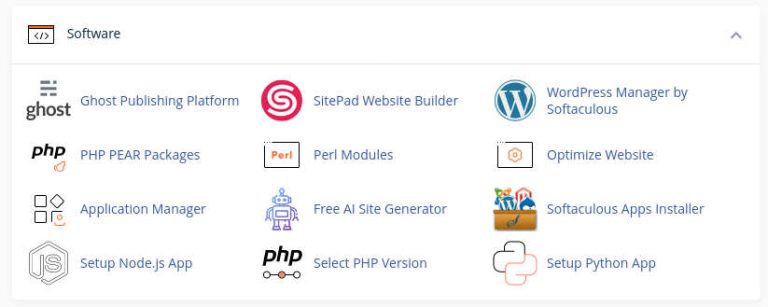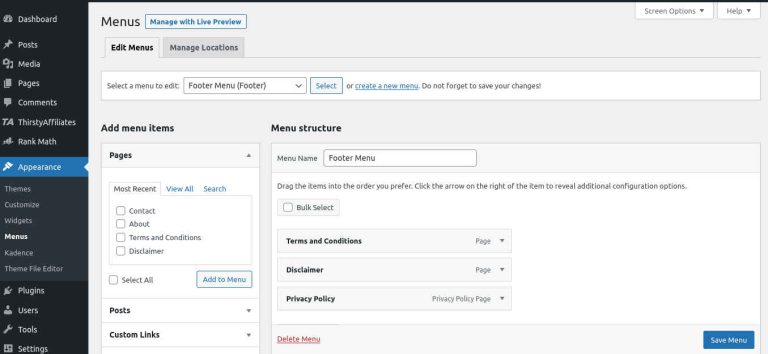How To Start a Profitable Science Blog (for Hobby or Career)

Creating content is an easy way to have an impact on the world of science while making a great income for yourself. And you can do it during your free time as a hobby.
There is a great need for engaging, easily digestible content in science. A lot of what is written in science journals and publications can be mind-numbing and inaccessible to most people. You can take advantage of this to create engaging science content that people can relate to.
Blogging is a particularly great way to get started in content creation, especially if you are a beginner. In my article on Why blogging is the best side hustle, I go into great detail about why you need to consider blogging for your first foray into content creation as a business.
However, as you will see in this article, blogging can be quite profitable if done right.
Creating a successful blog, however, is not a walk in the park. You need to have the right knowledge so that you can avoid the rookie mistakes that many new bloggers make.
In this article, I will take you through everything you need to create a science blog the right way. The information you get will give a strong foundation for creating a profitable and impactful blog.
Here are some of the topics I will cover:
A quick note: If you want to go straight to the technical steps of starting a blog, you can check out my quick-start guide to setting up a WordPress blog.
1. What Is a Science Blog?
A science blog is a blog where you share knowledge, ideas, concepts, and news about science. It is a great way for people who love science to share their passion with others.
A science blog can take various forms. Here are a few examples of the types of science blogs you can start.
- Science news blog. This shares the latest news and discoveries in science.
- A personal science blog. You can use this to share your personal opinions and ideas about aspects of science.
- A professional science blog. If you are in a science career, you can use this blog to share the results of your research or those of your collaborators.
2. Who Should Start a Science Blog?
While anyone can start a science blog, you will be at an advantage if:
- You have a passion for science. If you always consume content related to science, then take advantage of that to create content and monetize your science hobby.
- You have a science-related career. If you work in science, you can translate what you do in your job into content.
- You are a science student. If you study any science-related discipline, starting a blog can help you to learn faster and solidify your knowledge.
3. How Much Does It Cost to Start a Science Blog?
Creating a professional-looking science blog is surprisingly cheap. In fact, you can do it for the cost of dinner for two at a fancy restaurant. This is not bad considering that the blog can bring hundreds if not thousands of dollars every month.
There are two main costs associated with starting a blog. These are:
- Web hosting. This will cost you roughly $60 for one year of hosting (or roughly $5 a month).
- A domain name. This will cost you about $15 a year.
In total, starting a blog will cost you about $75.
Web hosting companies often give discounts and incentives that can further reduce this cost. For example, ChemiCloud often gives a free domain and hefty discounts (check for a discount).
There are other requirements (such as themes, and plugins) but you can go with the free options until your blog starts making money.
4. Can You Make Money From a Science Blog?
You can make decent money from a science blog if you know what you are doing. You can use the extra income to go on vacation, contribute to charity, or do something nice for someone.
So, how much can you make from a science blog?
Blogger surveys show that the average full-time blogger earns about $2,500 a month. Top bloggers can make over $200,000 a month (see examples here).
If you are doing blogging part-time, you should be able to earn at least $1,000 a month from your blog. However, how much you make from your blog depends on a variety of factors such as skill, competition, monetization methods, etc.
5. Why Start a Science Blog?
Besides making money, there are many other compelling reasons why you might want to start a science blog. For example, a science blog will help you to:
- Share your passion for science. If you have been in science for a while, you have knowledge, skills, and ideas that would be useful to others. Blogging gives you an excellent platform to share what you know with others.
- Position yourself as an expert. If you are in a science career, blogging can help you build your profile as the go-to person in your niche. Many scientists lose career opportunities because no one knows what they are doing.
- Network with others. You can use your blog to build a community of people who are interested in the same things as you. This will help you to make friends as well as open up opportunities for collaboration.
- Learn better. If you want to gain in-depth knowledge about a specific topic, try blogging about it. Blogging forces you to seek current information and write it in a way that can be understood by everyone.
- Learn to market. Many scientists are poor at marketing their ideas. Others with less ability end up taking your ideas and running with them. Blogging teaches you marketing skills that will help you to profit from your ideas.
6. Examples of Successful Science Blogs
When you are starting a science blog, it helps to look at examples of other science bloggers who are doing things the right way. This can give you an idea of how to navigate the various aspects of science blogging.
In this section, I will give you some examples of successful blogs that you can study and emulate.
#1. IFL Science
IFL Science was started by British blogger and science enthusiast, Elise Andrew in 2012 while still at university. Since then it has grown to be a popular source of entertaining science information. The blog was acquired by LabX Media Group in 2020, probably for millions of dollars.
Elise is a great example of how blogging and science blogging in particular can change your life.
#2. Dr Karl
Dr Karl is a personal website that was started by Dr. Karl Kruszelnicki, an Australian physicist.
In his blog, Dr. Karl blog aims to provide scientific information in a way that is accessible with a dose of humor. Some of the topics he tackles in his blog include climate change, space, and nature.

Dr.Karl monetizes the blog by selling books, getting bookings for events, and podcasting. This site is a great example of how you can use a blog for personal branding as well as promoting products and services.
#3. Live Science
Live Science is a popular blog that reports on the latest research and discoveries. It covers all kinds of science-related topics including astronomy, health, human behavior, and others.
The website has been around since 2004 and currently receives millions of visitors every month. The site makes money through advertising and works with many well-known brands.
This is a good site to look at to see what kinds of stories resonate with science-lovers.
7. Steps in Starting a Science Blog (10 Simple Steps)
Setting up your science blog is relatively easy. Even if you have never set up a blog before, it should take you roughly 30 minutes to do so.
In this section, I will quickly go through the important steps you need to take.
I have skimmed over some of the technical parts to keep this article short. If you need more details about the technical steps, you can refer to my quick-start guide to setting up a WordPress blog.
Let’s get started.
#Step 1: Choose a niche for your science blog
Your blogging niche is the focus of your blog. It is what you intend to write about in your blog.
Science is very broad and there are plenty of niches and sub-niches you can focus on. Examples of science niches you can target include:
- Established disciplines like Physics, Chemistry, Zoology, Botany, and Astronomy.
- Emerging technologies like Electric Cars, Reusable Rockets, and Artificial Intelligence.
- Hot-button issues like Climate Change, Renewable Energy, Alternative Medicine, and GMO Foods.
- Academia-related issues like Scientific Publishing, Peer Review, Funding, and Postgraduate Education.
- Scientific careers like Data Science, Software Engineering, Cloud Computing, and Environmental Science.
Niches can be very broad and it is easy to get overwhelmed when creating your blog. To narrow down and focus, there are several questions you need to ask yourself before you start your blog, for example:
- What are your goals? List down the main reasons why you feel compelled to start a science blog, for example, education, science entertainment, spreading good ideas, etc.
- Who is your target audience? These are the potential readers of your blog, for example, academics, scientists, college students, researchers, or the general public.
- What problems do you want to solve for your audience? Try and find out what problems your potential audience is facing and offer solutions. For example, what college students need to do to get into medical school.
- Which skills do you have? Look at the skills and knowledge you already have and use them in your blog. For example, if you are good at Machine Learning, you can start a blog about it.
- What do you enjoy? Find out what aspects of science you enjoy and wouldn’t mind writing hundreds of articles about. For example, if you are passionate about space exploration you can start a blog on space and rockets.
- Who are your competitors? Which existing blogs are writing about what you want to write? You want to avoid niches and sub-niches that are too competitive.
#Step 2: Choose a name for your science blog
Choosing a good name for your blog can help you to build a brand. Here are some tips on how to choose a name for your science blog.
- Make it easy to remember. A name that is easy to remember can benefit from brand searches on search engines like Google. Also, you are likely to benefit from return visitors.
- Avoid trademark infringement. Don’t make your name similar to another established brand or institution. You can get sued for trademark infringement.
- You can use your name. If you are a researcher or scientist, using your name can help to build up your personal brand and position yourself as an expert.
At this stage, you can also think about creating a logo for your blog. You don’t need to spend too much time creating a logo, a simple logo will do. Creating a logo is easy with tools like Visme’s logo maker.
#Step 3: Choose a blogging platform
If you intend to make money from your science blog, you need to start your blog on a platform that will not put too many restrictions on you.
While it might be tempting to start on a free platform, these often lack crucial features and often have restrictions. This can hamper your growth and ability to monetize.
The best blogging platform for your science blog
The best way to start your blog is to create a self-hosted blog using a platform like WordPress (WordPress.org not WordPress.com). WordPress has several advantages:
- It is the most popular platform. Over 40% of all websites online use it.
- It is free. You don’t need to pay anything to use WordPress. Most web hosting services will allow you to install WordPress with one click.
- It is open-source. This means that there are few restrictions on what you can do with your blog.
- It is easy to customize. You can add features using themes and plugins. For example, you can add a shop, a forum, or a membership site to your blog.
- There are plenty of tutorials available. You can easily find free learning materials on how to use WordPress.
In #Step 6, I will explain how to install and customize WordPress.
#Step 4: Choose a web hosting company for your science blog
You need a web hosting company to help you make your blog available online. This will cost you a couple of bucks every month but you can also pay yearly or every 3 years.
Choosing a good web hosting company is one of the most important things you can do for the growth of your blog. This is because web hosting affects crucial factors such as page loading speeds, security, and availability.
For your peace of mind, avoid choosing the wrong web hosting company because it can cripple the growth of your blog. Search engines like Google will throttle traffic to sites that are slow and insecure because they want their users to have the best experience.
Before you choose a web hosting company, I would suggest you do the following:
- Check for reviews on customer review sites like Trustpilot and Host Advice.
- Check for the amount of resources allocated (RAM, bandwidth, Inodes, Disk Space).
- Check for incentives such as a long money-back guarantee period, up-time guarantee, free backups, free domain, etc.
My recommended web host
I would suggest that you go with a web hosting company like ChemiCloud. It is by far one of the best-shared hosting providers for the following reasons.
- They are highly rated. The last time I checked, they had a full 5-star rating from their customers on HostAdvice and 4.9 Stars on TrustPilot. They have a reputation for fast, secure hosting and quick customer service.
- They are affordable. Their hosting plans start at less than $3 a month. They also tend to offer hefty discounts from time to time (Check for current prices and discounts).
- They give a free domain. This will save you about $15 for your first year.
- They have great features. Some standout features include 30GB NVME SSD drives, 350,000 inodes, and Litespeed Caching. These make your blog really fast.
- They have plenty of attractive incentives such as a free website migration, a free SSL certificate, a 45-day money-back guarantee, and a free CDN.
- They are easy to use. They use cPanel which makes it a breeze to manage your site.
If you want to see more ChemiCloud features, you can get them here.
Apart from ChemiCloud, other highly-rated web hosting companies you can explore include Hostinger, HostArmada, Dreamhost, Fastcomet, A2 Hosting, GreenGreeks, and Bluehost.
For this tutorial, I will show you how to set up your blog using ChemiCloud but the steps would be relatively similar for any other provider that uses shared hosting and cPanel.
Save Big On Web Hosting


Save Up to 70% by Hosting with ChemiCloud
#Step 5: Register your domain name and sign up for hosting
Once you decide which web hosting company you use, you need to go ahead and sign up for it. With ChemiCloud, this is a straightforward that should take you less than 10 minutes.
Here are the main steps you will follow.

- Choose your preferred web hosting package. With ChemiCloud, you have three options (Starter, Pro, and Turbo). For general blogging, I would go with the pro package since it allows you to have multiple websites under your hosting plan.
- Register your domain name. Search to find out if your preferred domain name is available for purchase. If it is available, then register it. If not, choose another name and search again. If you are on ChemiCloud, you can get a domain name for free which will save you about $15.
- Fill in your account details. These include your name, contact details, payment method, and other information required to make a purchase. Ensure you give the correct email address as this will be used to send your receipt and login details.
- Choose a data center to host your blog. You should select a data center that is closest to where the majority of your visitors will come from. This will make your blog faster for the majority of your users.
- Select extras. The one extra I would choose is domain privacy protection. This option keeps your private information out of the publicly accessible Whois data registry. This will save you from a lot of spam calls and emails.
- Make the purchase. Once all the options are filled, you can make a purchase. Note that when buying hosting, you often get bigger discounts when you buy for a longer period. ChemiCloud allows you to purchase hosting for up to 3 years. This means that you can lock in the discounted price for 3 years.
#Step 6: Install and configure WordPress
Once you purchase your hosting package, the web hosting company will send you an email with your receipt, log in details as well as other information.
You can now install WordPress. If you went with ChemiCloud (or any host with cPanel), this process is simple
First, use the login details that were provided to log into your web host’s website and cPanel. Once in cPanel, navigate to the softaculous installer and use this to install WordPress. It just takes a couple of clicks.

After the installation process is complete, you need to configure WordPress. Here are some common configurations you can do:
- Make any updates required (such as WordPress core or any themes/plugins you might need).
- Set a permalink structure. I would suggest using the ‘post name’ option.
- Delete any plugins that you will not need (such as Hello Dolly).
- Install an SSL certificate. You can use the free Let’s Encrypt SSL.
For more on the process of configuring WordPress, check out this YouTube video.
#Step 7: Install WordPress plugins
WordPress plugins help you to add various functionalities to your website. They can help with various tasks such as design, enhancing speed/security, and adding shops/forums.
Plugins are incredibly useful but if you add to many of them, they can slow down your blog and make it vulnerable to hacking.
I have an article that goes through the most important plugins you need (see The Best Plugins for a New Blog).
However, here is a summary of the most important plugins you need to have.
- A speed optimization plugin. This will help you to improve your blog’s page loading speeds. I would recommend WP Rocket for this (a paid plugin).
- A backup plugin. This will help you to make backups of your blog. I would recommend WPVivid for this (a free plugin).
- A design plugin. This will help you to design your blog. I recommend GenerateBlocks (a free plugin). It works very well with the GeneratePress theme.
To add a WordPress plugin, go to your WordPress dashboard, navigate to ‘Plugins’ and then click ‘Add New Plugin’

#Step 8: Design your blog
Once you have installed WordPress and the important plugins, you can now design your site. In the past, you had to get a designer to do this for you, but these days you can easily do this using a WordPress theme.
There are many good themes out there, but one of the best is GeneratePress. This is a light, secure, and fast theme that will not slow down your site or leave it vulnerable to hacking.
The premium version of GeneratePress costs around $59 a year (check current price and features). If you don’t have the budget for a paid theme, GeneratePress also has a free theme you can use. This is sufficient if you want a simple design.
There are plenty of tutorials on YouTube (such as this one) that will take you through the process of installing and using GeneratePress.
You can find plenty of other free themes in the WordPress repository. To install a free theme, go to the WordPress dashboard and click ‘Appearance’ then ‘Themes’ then ‘Add New Theme’. From here, you can search for any free theme on the WordPress repository (including the free GeneratePress).

#Step 9: Create important blog pages
Blog pages are used to display information that does not change often (in contrast to blog posts). There are several standard pages that you will need to create for your blog. These include the:
- Homepage. This is your root URL that acts as the hub for all your blog content.
- Blog page. You use this to display your blog posts, often in the order that they were published.
- About page. This page informs your visitors about you and your blog.
- Legal pages. These include privacy policy, terms, and disclaimer pages. These are often legally required and they provide information about the conditions for using your blog as well as how you collect and use personal information.
To create a blog page, go to your WordPress dashboard then navigate to ‘Pages’, and click ‘Add New Page’.

You also need to create a menu to make it easy for visitors to navigate your site. You can do this by going to the WordPress dashboard selecting ‘Appearance’ and then ‘Menus’.

#Step 10: Create your blog posts
Most of the content you will create in blogging will be blog posts. Blog posts are different from blog pages in that they have additional features such as comments, categories, author names, and dates.
To create a blog post, go to the WordPress dashboard and then navigate to ‘Posts’, and click ‘Add New Post’.

Quick note: If you have successfully gotten to step 10, then congratulations, you now have a blog. If you got stuck in any of the steps, you can check out my quick-start guide for a more detailed look at the various steps of starting a blog.
8. What to Write About In A Science Blog (Science Blog Topic Ideas)
Once you have set up your blog, you need to come up with ideas for blog posts and then write the posts. You can get blog post ideas by:
- Looking at other blogs in your niche.
- Using a keyword tool like KW Finder to find low-competition keywords.
- Looking at your personal experience and those of people around you.
- Looking at social media and YouTube.
Once you have some ideas, you then need to decide on the types of blog posts you can write. Here are some common types of blog posts you can write.
- How-to/Tutorial posts. These provide step-by-step instructions on how to do something. For example: How to create an artificial volcano in class.
- Reviews. You can review equipment and services commonly used in science. For example, Celestron Inspire 100AZ: Is this the best budget telescope?
- Lists. You can use lists to give easy-to-digest summaries. For example: 13 Science-backed ways to build immunity.
- Q and A posts. You can use these to provide quick answers to your readers’ questions For example: Why are flamingos pink?
- Personal stories and anecdotes. You can use these posts to give your personal experience or opinions about topics, products, or services. For example: Why I don’t intend to buy an electric car.
- News posts. You can write these posts to provide current information about your niche. For example: Space X’s Starship finally gets a launch license.
- Comparison posts. You can write posts to compare two or more items, ideas, or products. For example: Celestron Nexstar vs Celestron Astro: Which is the best telescope for stargazing?
- Round up posts. These are ‘best-of posts’. For example: Best places to see the northern lights.
9. How to Get Visitors to Your Science Blog
Once you have written and published your blog posts, your next challenge will be to get visitors to your blog. Below are some proven methods of getting visitors to your blog.
You will need to experiment with a few of these to see what works for you and then double down on what gives the best results.
- Target keywords you can easily rank for. If your blog is new, you need to look for low-competition keywords using a tool like KW Finder. Trying to compete against big brands with experienced SEO experts will be difficult. As your blog grows, you can start targeting more difficult keywords.
- Write SEO-optimized blog posts. This will make it easy for search engines like Google to find and rank your blog posts. You can do this by placing your target keyword in your blog title, URL, and sub-headings.
- Link to other relevant posts in your blog.You want to direct your visitors to other related posts through internal linking. This will increase the amount of time your visitor will spend on your blog.
- Promote on social media platforms. You can use platforms like YouTube, Instagram, TikTok, and Pinterest to send visitors to your blog. Each platform has its pros and cons but it helps to diversify your traffic beyond SEO.
- Use an email list. Sign up your visitors to an email list so that you can keep in contact with them even after they leave. You can use a service like Systeme.io for this.
There are many more ways to promote your blog, but these should be enough to get started.
10. How To Make Money From Your Science Blog
The key to making money from your science blog is to have an engaged audience. As long as you are getting visitors to your site, there are a variety of ways you can monetize your blog.
To make the most money from your blog:
- Have a catalog of SEO-optimized blog posts. Aim to have at least 100 blog posts.
- Target a variety of monetization methods.
- Increase your conversion rate through good copywriting techniques.
In this section, I will give you the most beginner-friendly ways to make money from your science blog.
#1. Display Ads
This is by far the easiest way to monetize your blog. You simply sign up for an ad network like AdSense, Ezoic, or Mediavine. Once you are accepted, they will put display ads on your blog and pay you every month.
Income from display ads can be low, especially if you don’t have a large number of visitors. Also, you need to fulfill certain requirements before you can get accepted to these ad networks.
#2. Affiliate Marketing
In affiliate marketing, you promote products and/or services and you get paid a commission when people purchase using your affiliate link. You can potentially make good money with affiliate marketing, especially if you target the right keywords.
Some products and services you can promote include experiment kits, books, DVDs, and courses.
To get started, you need to sign up for a company’s affiliate program or join an affiliate network. Once you get accepted, you can start promoting their products or services.
Some good affiliate networks for science blogs include: Amazon Associates, MEL Science, Coursera, Adventure Academy, Udemy, Skillshare, and Springer.
#3. Sell Digital Products
Selling digital products is great because you create a product once and then make money from it for years to come. Some of the digital products you can sell include ebooks, courses, worksheets, planners, stickers, posters, and journals.
You can use a platform like Payhip to sell your digital products. They take care of all the technical stuff involved in getting your product to your customer. What I like about them is that they have a free tier where they only charge you a small percentage when you make a sale.
If you want to try Payhip, you can use my discount code (HOBBY10) for a discount on the paid plans.
11. Quick Tips and Advice For Creating a Successful Science Blog
Blogging is not for the faint-hearted. Many newbie bloggers quit before they can reap the full benefits of blogging. However, if you stick with it and do the right things, the rewards can be substantial.
Here are some quick tips to get you started.
- Give value to your readers. Be intentional about meeting your audience’s needs. To do this, you need to understand what your visitors want when they come to your site.
- Give your blog a good foundation. Ensure you have a good web hosting company and a good theme so that your blog is fast, secure, and SEO-friendly. This is critical to getting ranked on search engines like Google.
- Make your blog posts easy to read. Write your blog post as if you are talking to a friend. Use images and bullet points to break up your text. Also, ensure you check for grammatical errors (you can use Grammarly for this).
- Be consistent. You need to have a schedule where you write every day for an hour or two so that you can produce 1-3 blog posts a week depending on your speed. If you do 2 posts a week, you should have 100 blog posts in a year.
- Make use of blogging tools. Blogging tools can make your blogging much easier. For example, you can use keyword tools like KW Finder to get ideas for your post and AI writers like Writesonic to help you write.
- Be willing to learn. There are many new skills you will need to learn to make your blog a success, so you must commit yourself to being a perpetual learner.
- Don’t expect quick success. It can take anywhere between 2-3 years to build a successful blog, so you need to have a long-term view.
If you need more blogging tips, I have an article with over 100 blogging tips that you can check out. It will give you a summary of everything you need to be successful in blogging.
Wrapping Up
My aim in writing this article was to give you the basics of what you need to start a successful science blog.
Most bloggers fail before they even start because they procrastinate and postpone starting a blog. Creating a successful blog takes time. Most bloggers start to see significant results after 2-3 years of consistent blogging.
Therefore, the sooner you start, the better. If you had started your blog 3 years ago, today you would be reaping the benefits.
With that said, try and have fun with blogging while making some money on the side and helping people along the way.
Further Reading
If you need more information on blogging, the following articles can help you out.
